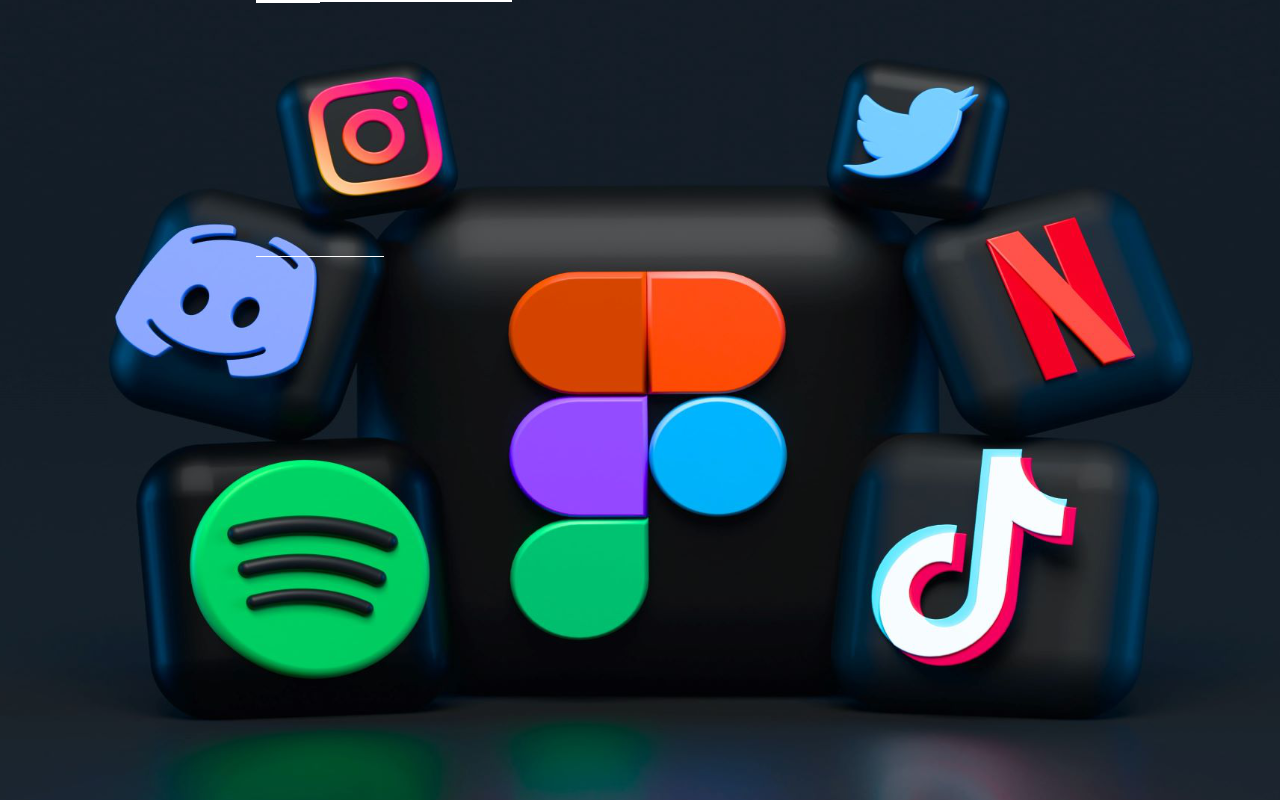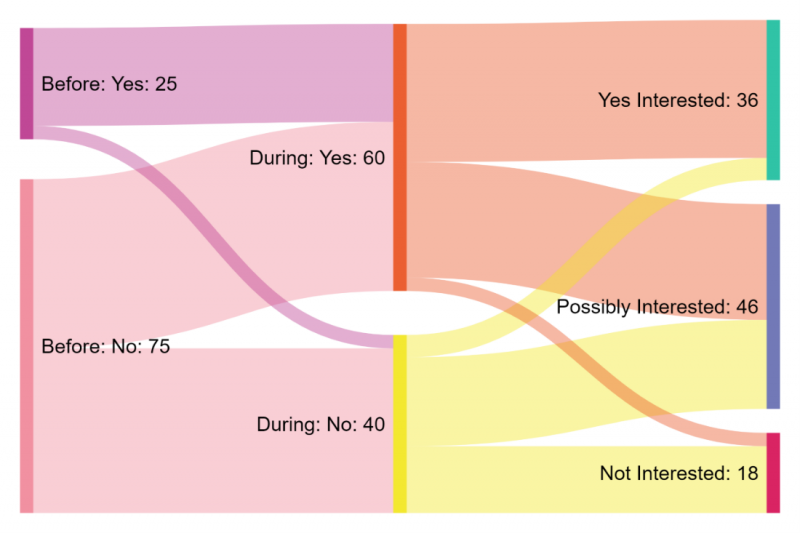
Photo: Alexander Shatov
Social media success relies on one thing: telling stories
Engagement with longform online content may be on a downward trend but, as Adam Koszary writes, expectations for creative storytelling on social media is picking up apace.
Social media can be an extraordinary opportunity and an overwhelming challenge for arts and cultural organisations. When you get it right you can connect with millions around the globe but, for many, it feels like shouting into the void.
During the pandemic organisations poured time, love and energy into their social media to stay connected and, in so doing, accelerated audiences’ own online expectations of the cultural institutions they engage with. Now is a good time to take stock of the necessary strides we took, reassess our desired direction of travel, and identify where best to go next.
The boom and bust of pandemic digital engagement
Data from the Cultural Participation Monitor show a collapse in online engagement with cultural organisations from 26% in spring 2021 to 12% in spring 2022 – but there are two sides to that story.
One is that, now that audiences can get out of the house and live their lives, there’s simply less demand for online experiences. The other is that there are fewer opportunities for online engagement being offered, as organisations shift time and effort back into all the other activities the pandemic put on pause.

On the face of it this is discouraging, but misleading as it simply reflects how the kinds of content that were being published were a logical and popular response to the very specific set of needs created by the pandemic. Think stay-at-home quizzes, live-streamed performances, and virtual tours. The Power of Storytelling, in which Tate’s Director of Digital discusses the museum group’s pandemic pivot to online content, is a particularly compelling example.
Now, we face a different reality and different audience demands. What has also changed is our audiences’ technical abilities and receptivity to online experiences. In Indigo’s Act Two Survey, only 25% had engaged with cultural digital content before the crisis. This rose to 60% during the height of Covid and, looking post-pandemic, 48% were possibly interested in engaging in future.

So audiences have had a taste of digital content, but we need to convince those sitting on the fence that we have something fresh and relevant to offer now that we aren’t locked in our homes. The challenge, though, is knowing where to find these audiences.
Platforms are proliferating
We’ve all seen social media channels rise and fall. I remember micro-blogging on Livejournal and spending hours carefully crafting my MySpace profile. The big three platforms – Facebook, Instagram and Twitter – have stood the test of time so far, but the dizzying pace of new features across all three of them reflects their anxiety about losing market share to up-and-comers.
They are right to fear, with all major platforms struggling with cyber-bullying, disinformation and privacy concerns. There is no shortage of evidence of the adverse psychological effects of using social media, whether its body dysmorphia on Instagram, the mob mentality on Twitter or radicalisation on Facebook.
Some audiences are retreating into social media channels that focus on privacy, micro-communities and transient content. Platforms such as Discord represent the resurgence of private forums, and BeReal – which randomly prompts users once a day to share a photo of what they’re doing within two minutes – focuses on authenticity above fake social media lifestyles. And while audiences may be leaving Facebook, many still use Messenger as a private space for friends and family.
The splintering of audiences across different platforms is a challenge for already-stretched teams, but it doesn’t mean you should abandon the large social media platforms. People can segment their online presence – using Instagram for holiday snaps, Twitter for memes and politics, and then more niche, private channels for talking to friends and family.
We don’t need to crack into all these spaces – if you’re using BeReal to check in with grandma then you don’t really want a museum or art gallery sticking their nose in. But it does mean that when we plan our campaigns and engagement, we should be willing to explore niche platforms if they align with the communities we’re engaging with.
That makes the type of content we create all the more important. We need to be making these spaces increasingly informative and fun places to be.
Video continues to dominate
The increasing availability of data and sophistication of smartphone technology has resulted in an explosion of video content.
It’s almost a cliché to say that platforms are pivoting to video as they’ve been at it for quite a while now. Longform video, however, continues to suffer at the expense of shorter-form video such as Instagram Reels and TikTok. Even Youtube, where longform video still performs well, is hedging its bets with YouTube Shorts.
There hasn’t been much of a push in the cultural sector for video-first content, undoubtedly because of the specialist skills and sheer amount of time it takes to consistently pump out videos. And yet, it can be done. The Royal Institution’s been doing it for years, but standout stories like theirs and Emily Graslie’s The Brain Scoop and the Black Country Living Museum’s TikTok are few and far between. These cases show that the opportunities exist, but their rarity belies the challenges in grasping them.
As video becomes more commonplace, more of us will need to step up to the plate or risk irrelevance. This requires a careful balance of embracing the lo-fi, TikTok-style of video that doesn’t require everyone to have a Film degree, but also ensuring a high enough quality to engage with users. It doesn’t take much investment to get some extra kit for a smartphone, but it takes a lot of courage to take the leap of committing yourself to film. Cultural organisations found the jump to social media painful enough and integrating regular video content will be even more so for some.
For now, we can get away with neglecting video to an extent, but it will become more and more ubiquitous. Those who get in on the ground floor by sorting out their video strategy sooner than later will benefit most.
The principles remain the same
Resource and time are always the chokepoints but, with a focused strategy, arts and cultural organisations have the tools to grasp the opportunities and meet the challenges.
The possibilities of social media are often overwhelming, and there’s a palpable pressure to be keeping up with every new channel, every new format and every new trend. We have a habit of tying ourselves in knots over social media but forget that people use it to waste time, be entertained, be informed and have conversations.
Ours is just a snippet in a stream of content people are exposed to online, so it’s up to our creativity, grasp of trends and personality to make stories sing. Success doesn’t look like spreading yourself thin over fifty platforms, it’s about how well your stories are connecting with your audiences.
The challenge of social media remains the same as it always has been – how to identify those stories for your organisation, and then how to choose the most effective way of communicating them. Crucially, that also involves galvanising colleagues and communities in helping to tell those tales too. Luckily, arts and cultural organisations sit on a mountain of stories and content.
We’re also fairly good at understanding our audiences and their needs. While social media changes around us, focusing on our audiences and the joy of storytelling will always see us through.
Five things you can start thinking about straight away:
- Don’t spread yourself thin. Know where your audiences are and use the platforms they use.
- Move on from pandemic thinking. Adapt your content to how audience needs have changed.
- Start thinking about your video strategy. How can you start creating short, low-effort but high-impact video?
- Find the stories in your organisation and tell them.
- Don’t stress. Social media is an iterative beast – keep trying new things and keep experimenting.
If you would like to talk about your own organisation’s social media strategy in the brave new world, please get in touch.
Adam Koszary is Head of Digital at The Audience Agency.
![]() [email protected]
[email protected]
![]() @audienceagents | @AdamKoszary
@audienceagents | @AdamKoszary
This article, sponsored and contributed by The Audience Agency, is part of a series sharing insights into the audiences for arts and culture.

Join the Discussion
You must be logged in to post a comment.